Text and Visuals By: Arpita Victor
Editor: Riya Singh Rathore
The loss of 50,000 hectares of forest cover over the last couple of decades in Uttarakhand has led to micro-climatic changes in the state. These climatic shifts include a high risk of floods, according to Abinash Mohanty’s analysis for the Council on Energy, Environment and Water [1]. The state, famously home to the revolutionary Chipko Movement and its forest conservation objectives, has also become part of the ecofeminism discourse. While two prominent men led the movement, it was Uttarakhand’s women who were most affected by the loss of forests in the state. Therefore, it was the women who became the backbone of the movement through their mass mobilisation and active participation in preserving the forests.
There is a saying in the state’s Kumaoni language that roughly translates to, “the jungle is a woman’s maternal home”. The expression shows the cultural interlink between a pahari woman’s identity and the forest. The women are responsible for domestic work such as tending the fields, raising cattle, and collecting firewood and other forest produce to keep the household running.
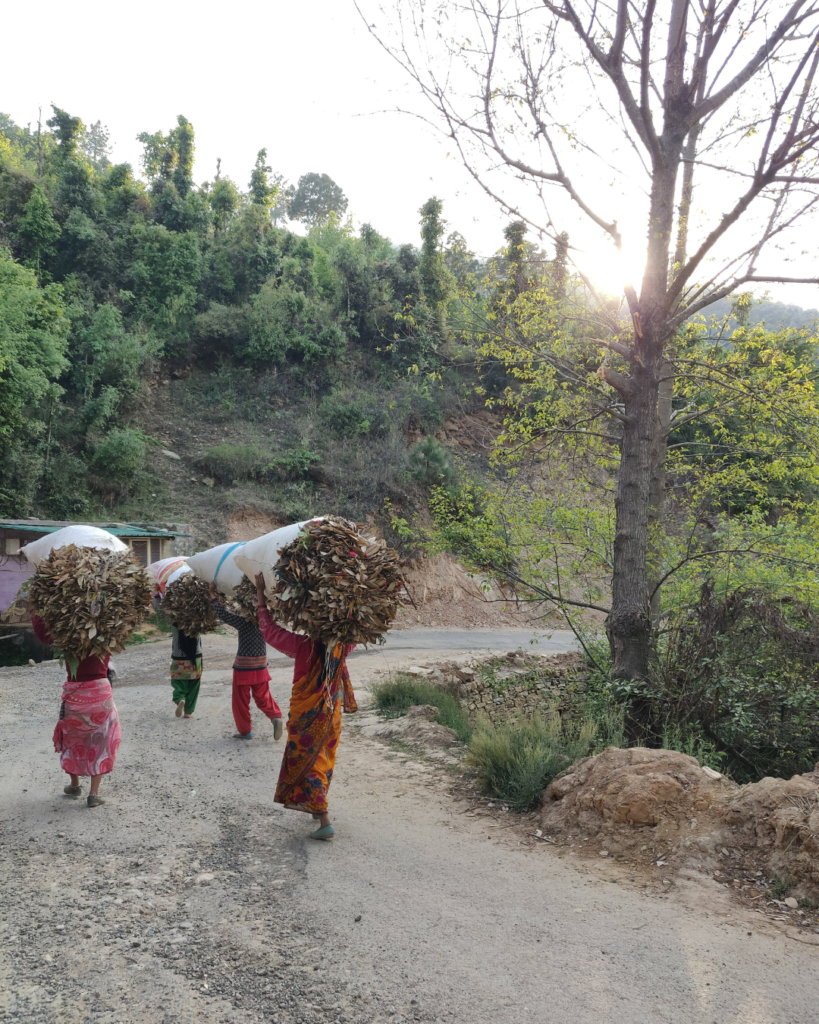
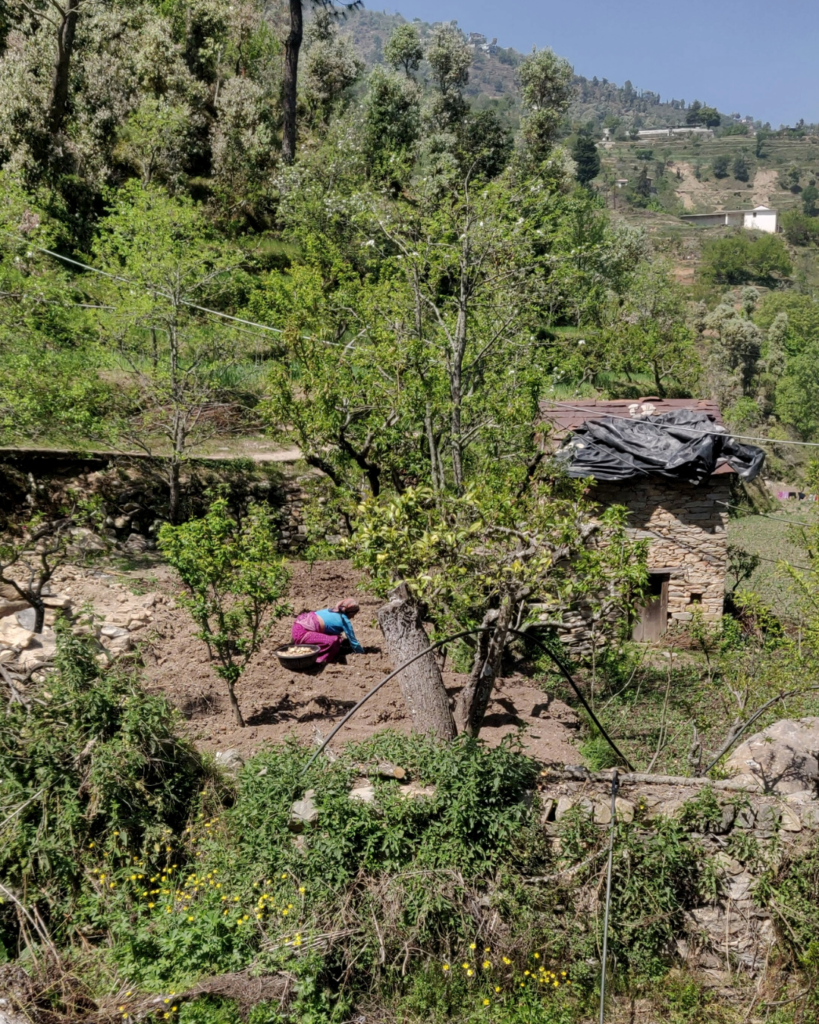
Such is the story of a quiet village in Nainital’s hinterlands named Bana (for “forest”). Bana is a cluster of 160 houses spread across the valley between Ramgarh and Mukteshwar. In October 2021, a cloudburst in Ramgarh, the first such recorded disaster in the Nainital district, reached Bana. Villagers recall 15 days of continuous rain and the resulting landslides, which swept away entire steps of the hill fields. They also severely damaged sections of the only two cemented roads in the village. The debris that flowed down the hillside blocked streams as well as check-dams.
Upon asking a local about why they think the climate is changing in Bana, they responded with: “Because of the cloudburst last year. We never had cloudbursts in Nainital before. These were events we heard about from Uttarkashi and Pithoragarh, not Nainital.”
This photo essay follows Kamla Devi’s everyday life [2], a 58-year-old pahari woman residing in Buribana, to reflect on how the climatic shifts impact rural hill women through understanding their first-hand experiences. The discussions took place over a two-week-long field visit to a village called Buribana, in Nainital in March of 2022.
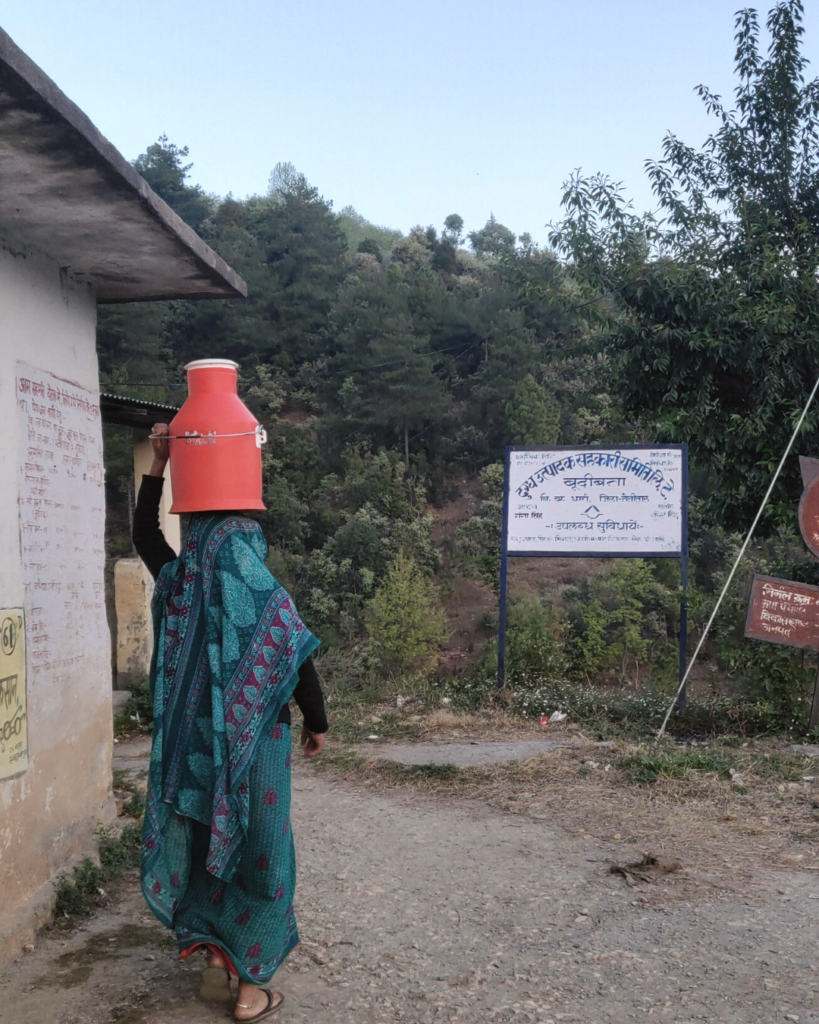
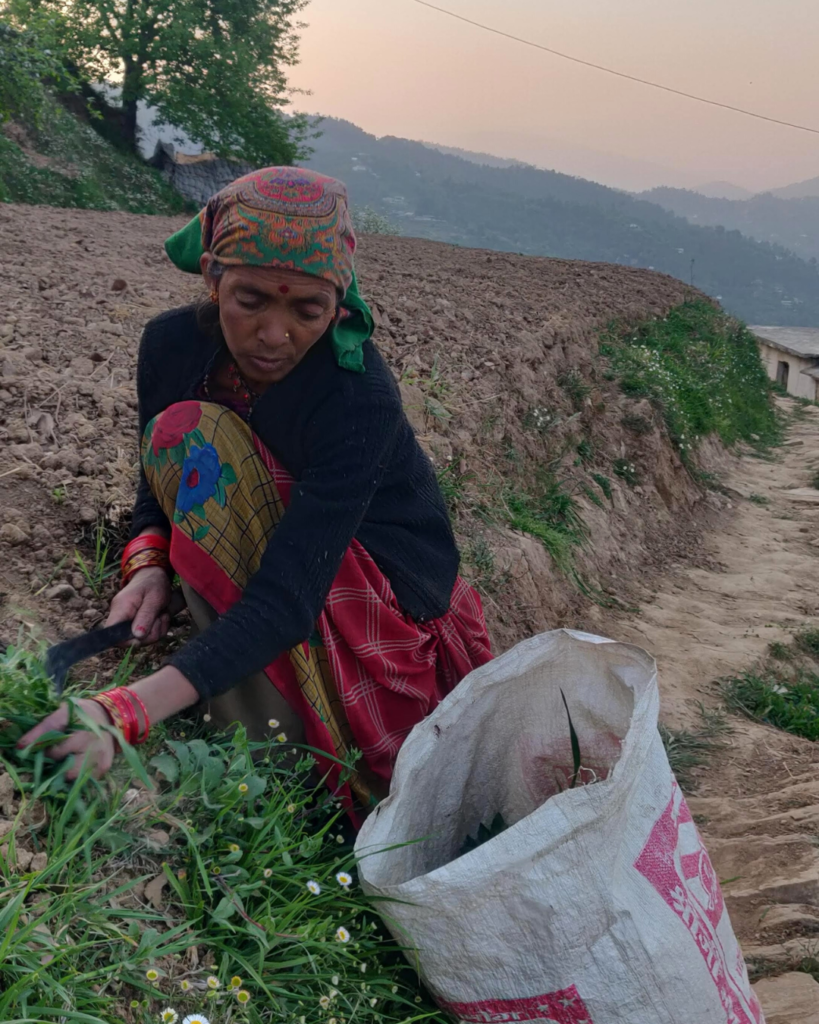
Kamla wakes up at 5:30 am and heads to the house’s ground floor, where her two cows, a calf, and a goat are housed. Kamla milks the cows, and once she is done, she hoists the milk canister on her head, balances it with one hand, and travels downhill to sell the milk in the village dairy. Once she is done selling, Kamla heads back home. On her way back, she crosses one of the three village handpumps. Not many people come to pump water anymore as they did during Kamla’s youth since most of the houses are today directly connected to water supply from natural springs and streams. But increasingly, people gather to fill canisters with water. The congregated locals either did not have a connection to their house, or their water source, usually a spring, is running low – an unusual thing for just late March.
By the time Kamla reaches back home, the morning sun has already warmed the cement landing of her house. The heat is unusual for March and April, the consequences of which reflect in the dusty potato and pea fields. Later in April, there would be news reports on the hottest March in Uttarakhand in three decades [3]. In almost every household surveyed, there were gripes about crops drying up and hopes for rain. While water for domestic purposes has become easier to access, the crops have suffered. “It used to rain at least once every month, and it was never this hot so early in the year,” Kamla says “people used to have this saying, ‘Nainital ki fashion, Mukteshwar ka mausam,’ translating to ‘Nainital’s fashion, Mukteshwar’s weather’. The phrase implied that Mukeshwar’s weather changed as often as Nainital’s fashion”. Earlier in Nainital, it would rain atleast once a month, however, due to changing weather patterns, it does not rain for three to four months at a stretch causing crops such as potatoes to dry up.
Kamla asks us to accompany her to the forest and leads us up the hill without needing to look up. She keeps her hands occupied with the green socks she has been knitting. She is a member of a cooperative run by the Kumaon Grameen Udyog NGO, which enrols women from around the Dhari and Ramgarh blocks. Their programme’s participants knit a variety of products which the cooperative managers sell to Fabindia, iTokri, at fairs and places like Dilli Haat in Delhi. Additionally, women in the village have created more opportunities for themselves through formation of SHGs [Self Help Groups]. These women-run SHGs take up the security and maintenance of the village forest, collecting money and using it to pay the woman designated chowkidar or guard for the fortnight.
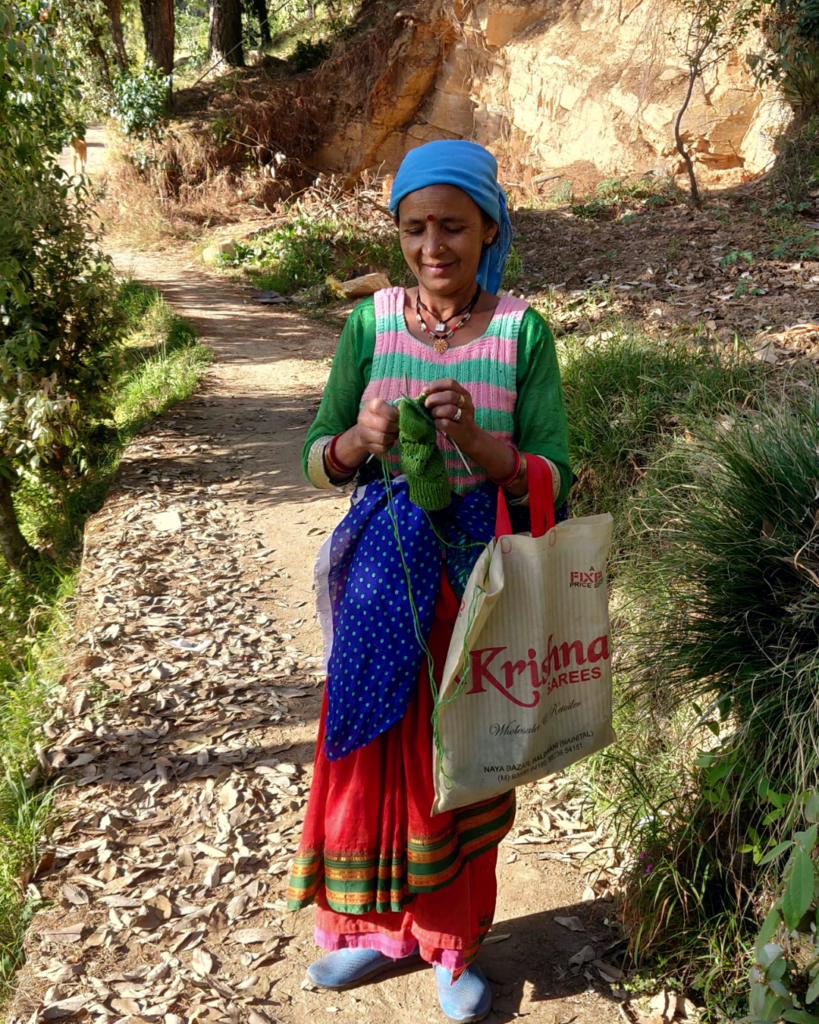
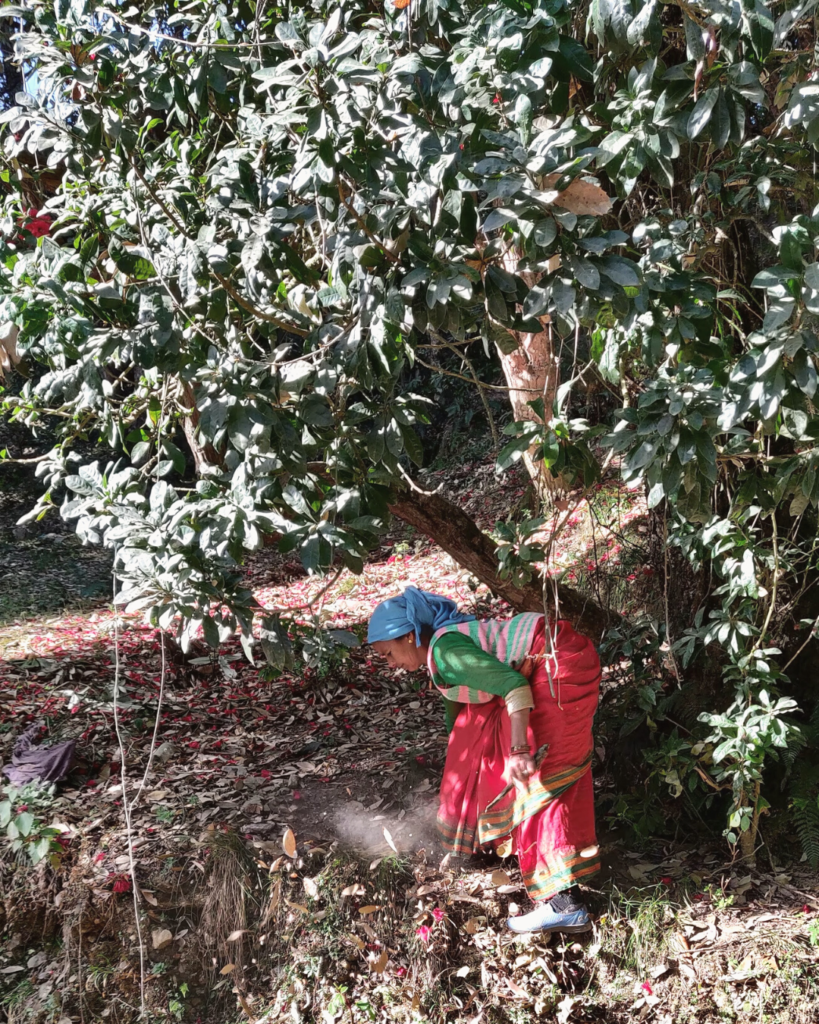
Kamla Devi knitting and collecting leaves
We lag behind the swift Kamla as we head up the hill towards the forest where the baanjh oaks have shed their leaves. Many village women collect these in big grain sacks and bring them down to their homes. The primary caretakers of cattle will spread the leaves on the cattle shed floor in a practice they call bichhawan which means ‘spreading’. With the animals’ body warmth and manure, the leaves become a fertile source of manure for the fields.
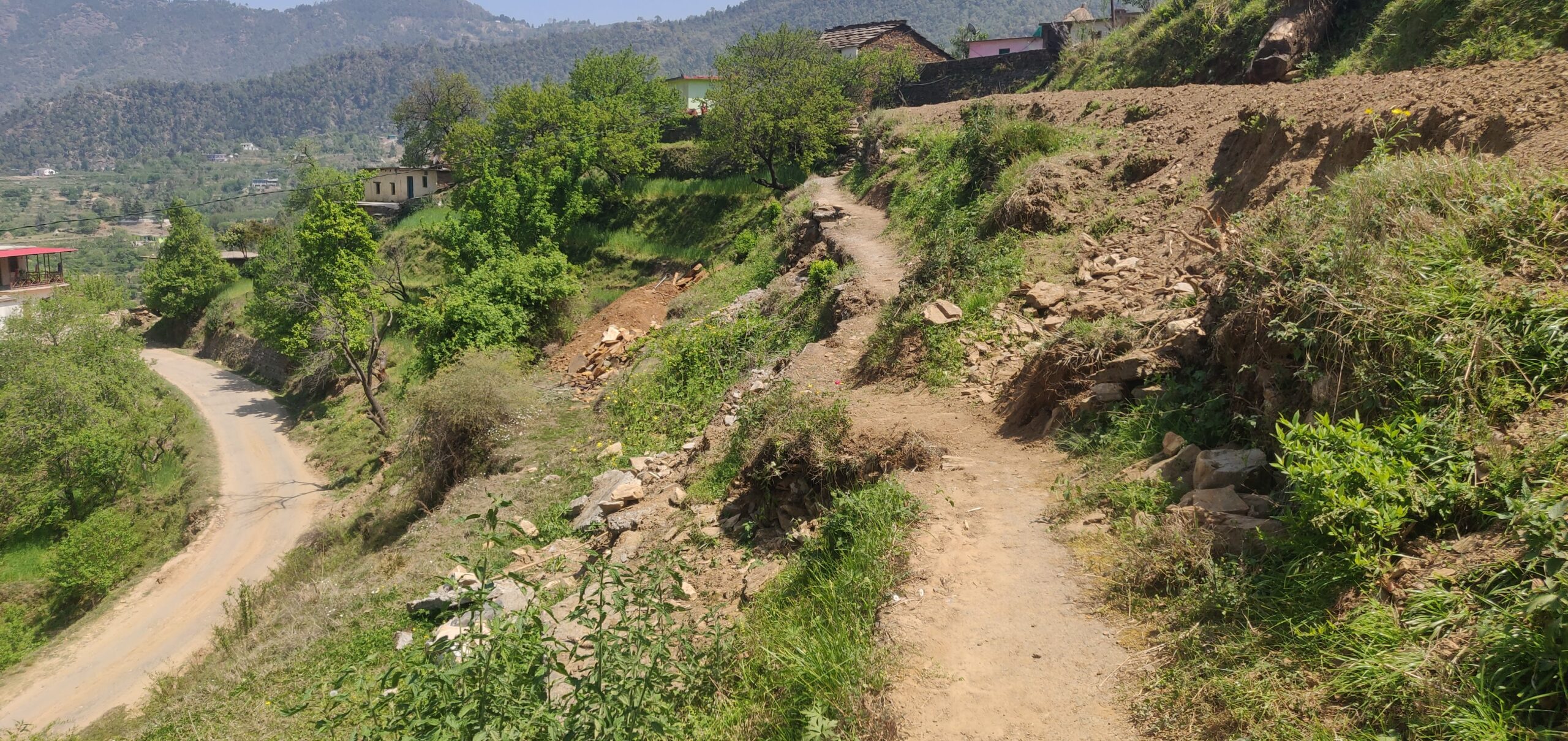
From the elevation of the hill, the valley’s greenery’s breaks are unmissable. These are the results of the previous year’s cloudburst landslides. The slides breached the walls of the step fields, damaging the PVC pipes, which supplied the villagers’ houses with water from the springs and handpumps. The blocked water supply coerces women to manually hand pump water. Many times this duty falls onto the children who either skip school for the chore or get involved in domestic activities as soon as they return.
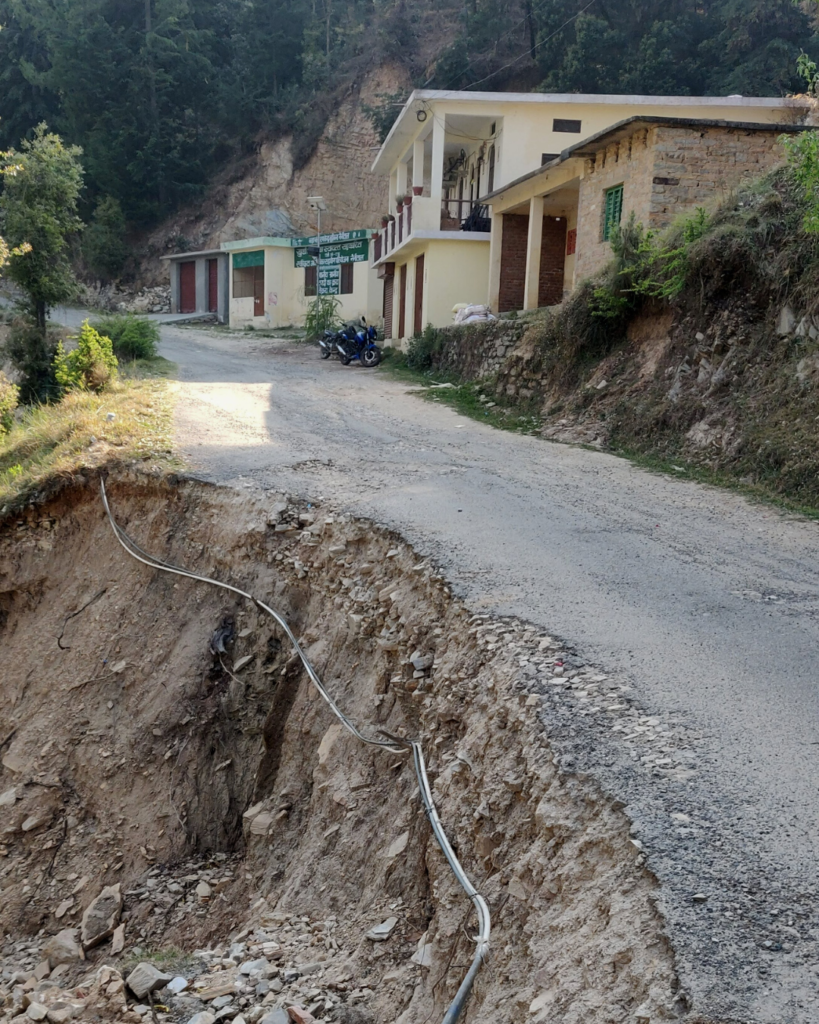
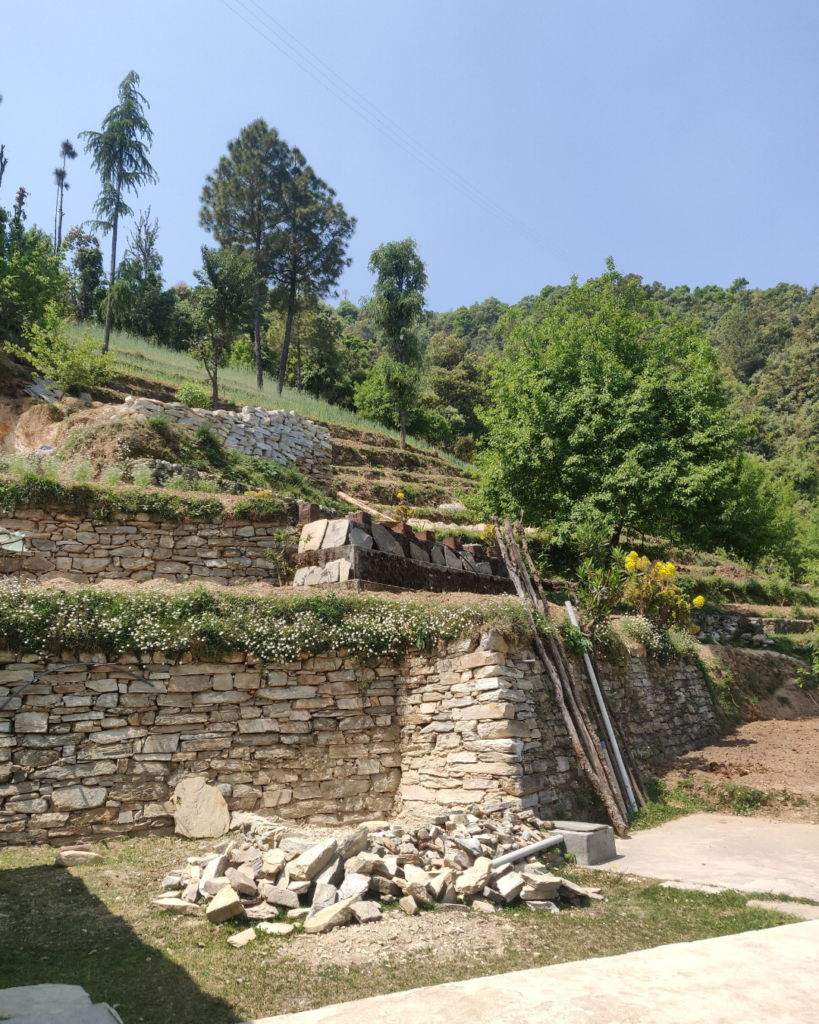
Lately, Bana’s farmers are becoming increasingly indebted. They are reeling from the pandemic-induced setbacks in an already hostile market for their crops. The land is not as productive as it used to be, and people are unable to grow their own ration and pay off their debts. Women’s burden of maintaining the household weighs heavier with increasingly limited means, alongside the forests becoming sparser and drier. Fodder no longer grows in the local woods. Village women feed their cattle with expensive fodder from Haldwani which is 60 kilometres away. Women explain that the variety of crops they grow has also decreased, making it difficult for them to ration food and cook balanced meals. Apart from wheat and rice, there is little else they can buy from the market to supplement their diet, and they grow their own garlic, onion, and herbs.
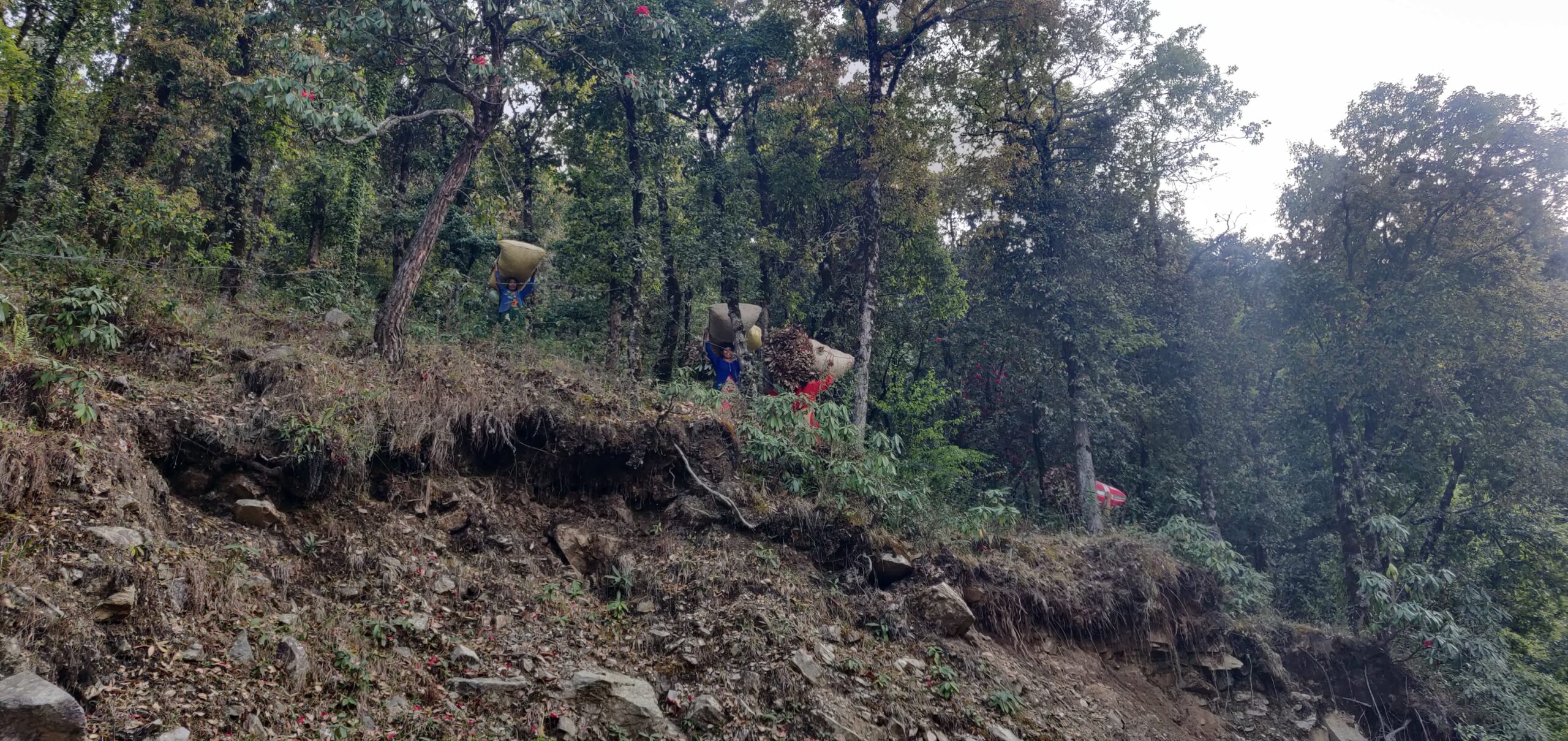
Life has always been hard in the village, and the villagers woes only grow each passing year. But they still have their pahadi identity, which helps them persevere despite the climatic adversities. This is especially true for the women who keep the household running in the absence of their husbands and single-handedly protect the forests of their village.
Endnotes
[1] Council on Energy, Environment and Water. (2021). 85 per cent districts in Uttarakhand vulnerable to extreme floods: CEEW. https://www.ceew.in/sites/default/files/CEEW-Uttarakhand-Extreme-climate-events-press-release-11Feb21.pdf.
[2] Name changed
[3] Talwar, G. (2022). Record heat sees rapid snow melt in Uttarakhand. The Times of India. https://timesofindia.indiatimes.com/india/record-heat-sees-rapid-snow-melt-in-uttarakhand/articleshow/90966114.cms.
Arpita Victor is a Masters student at The Energy and Resources Institute (TERI).
